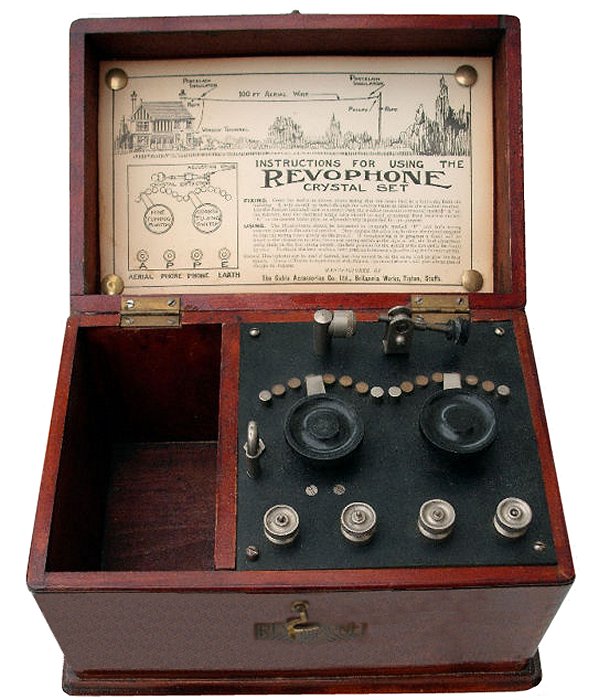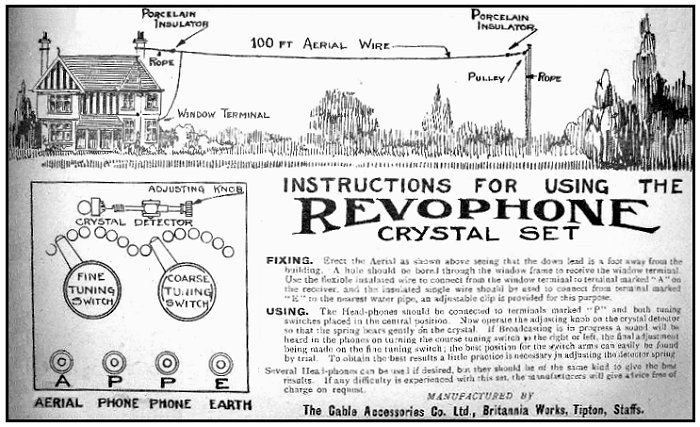mw0njm.
A Brummie Dude

When The Light Programme (Radio 4) started broadcasting on 29th July 1945, on 1,500 metres, in the Long Wave band, Revo produced a dual band version of the 'Revophone' using a plug-in Long Wave coil.

The instructions read as follows:
Fixing. Erect the aerial as shown above seeing that the down lead is a foot away from the building. A hole should be bored through the window frame to receive the window terminal. Use the flexible insulated wire to connect from the window terminal to terminal marked “A” on the receiver, and the insulated single wire should be used from terminal marked “E” to the nearest water pipe, an adjustable clip is provided for this purpose.
Using. The headphones should be connected to terminals marked “P” and both tuning switches placed in the central position. Now operate the adjusting knob on the crystal detector so that the spring bears gently on the crystal. If broadcasting is in progress a sound will be heard in the phones on turning the coarse tuning switch to the right or left, the final adjustment being made on the fine tuning switch; the best position for the switch arms can easily be found by trial. To obtain the best results a little practice is necessary in adjusting the detector spring.
Several headphones can be used if desired, but they should be of the same kind to give the best results. If any difficulty is experienced with this set, the manufacturers will give advice free of charge on request.
source historywebsite.co.uk

